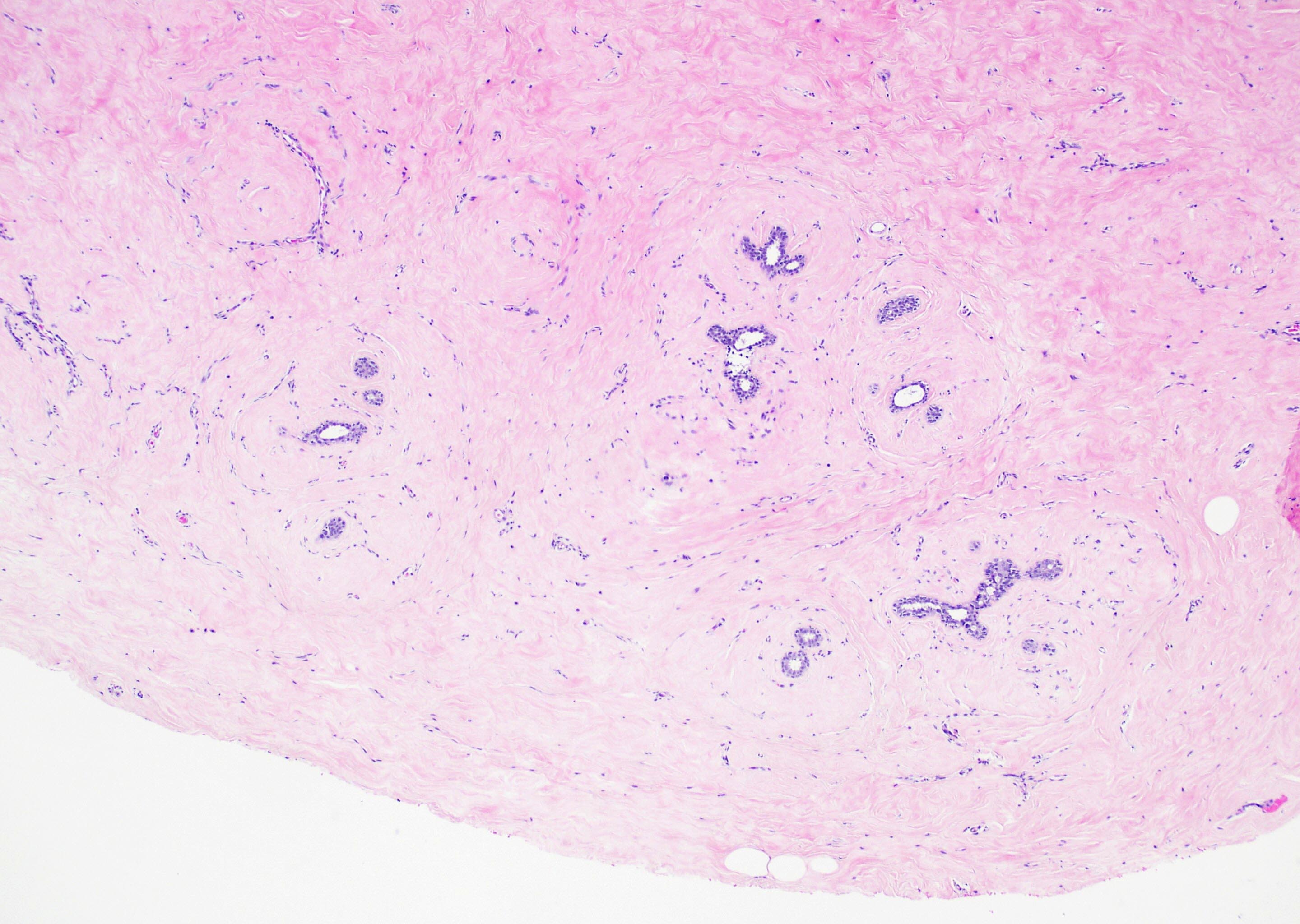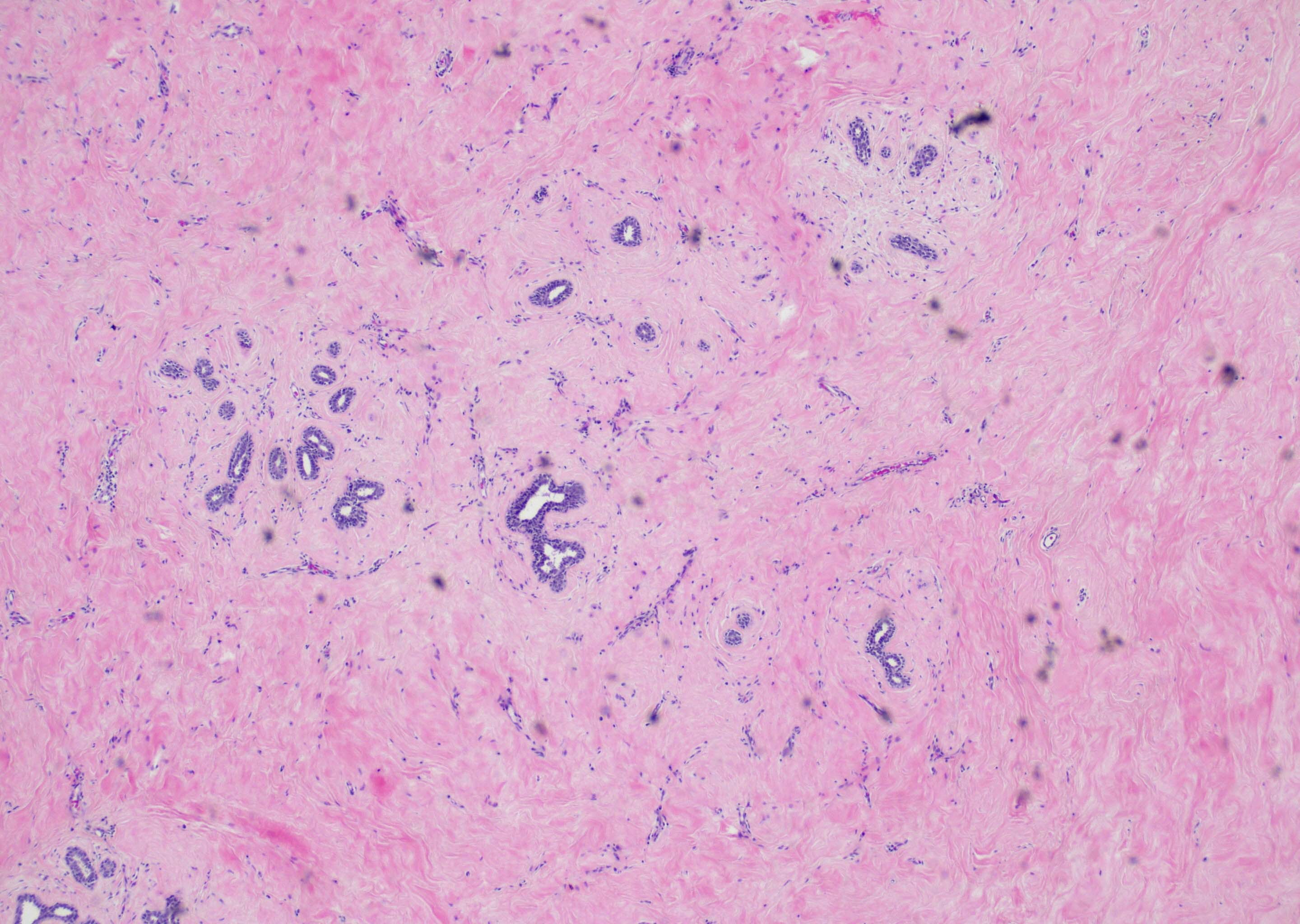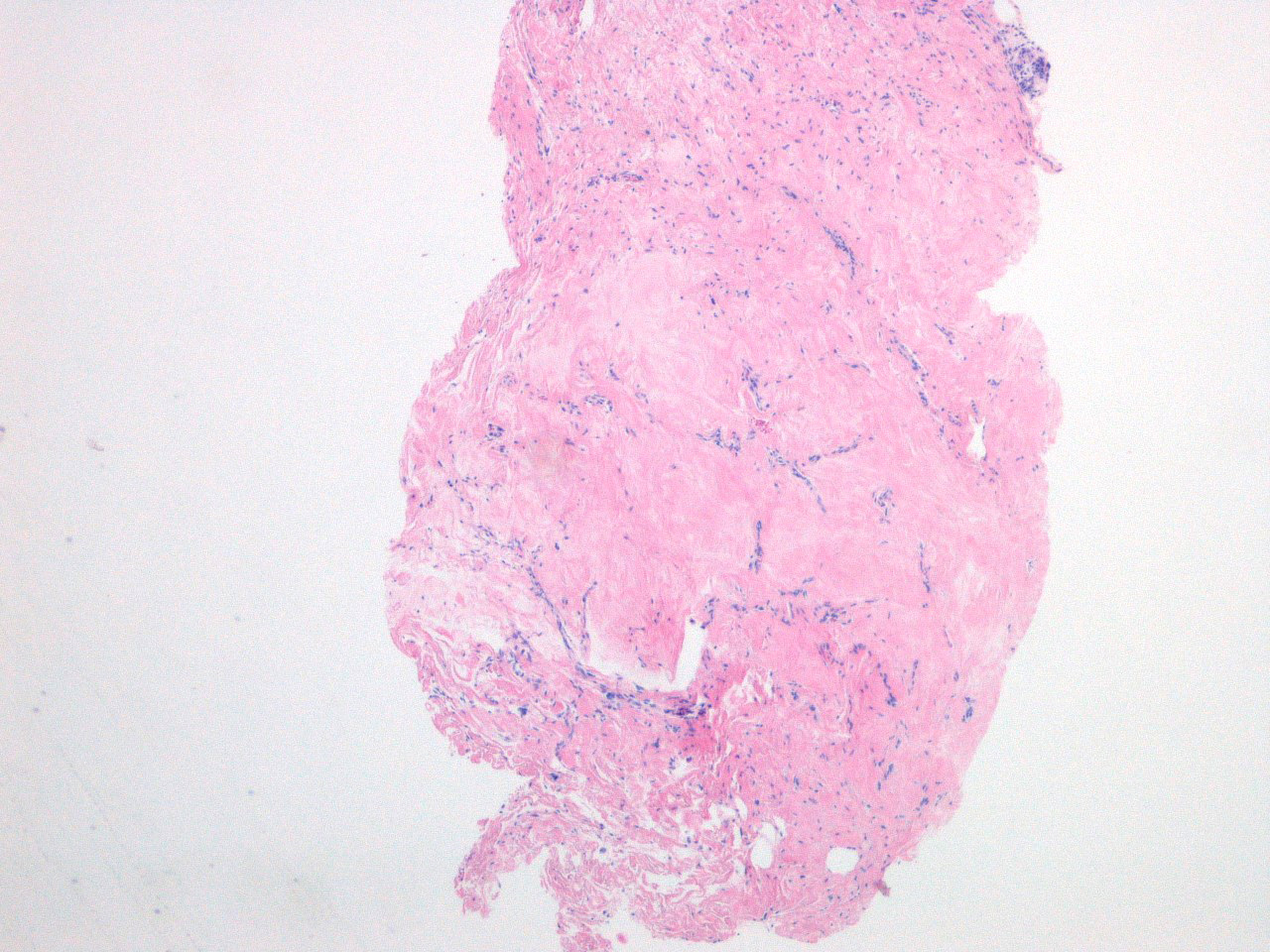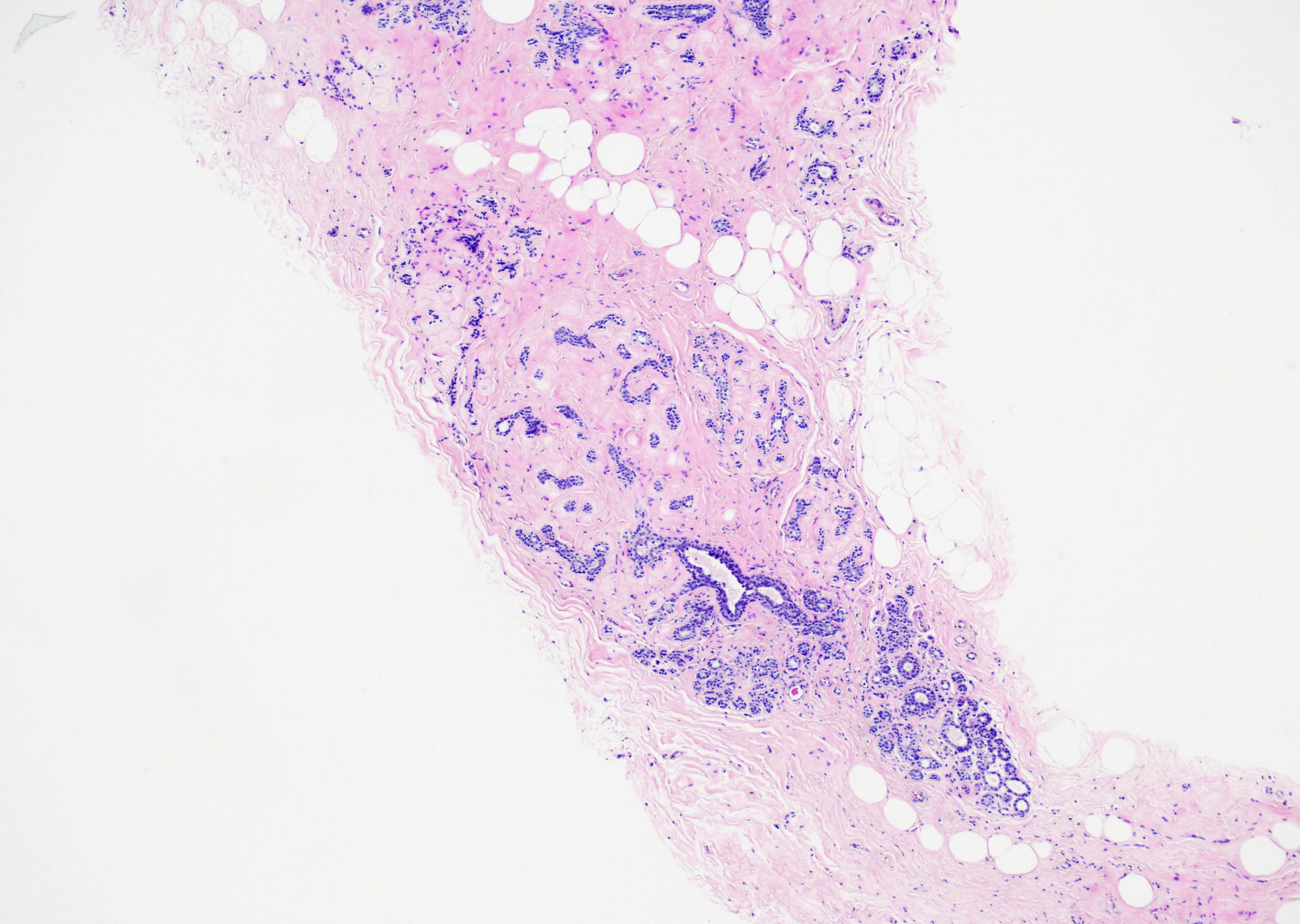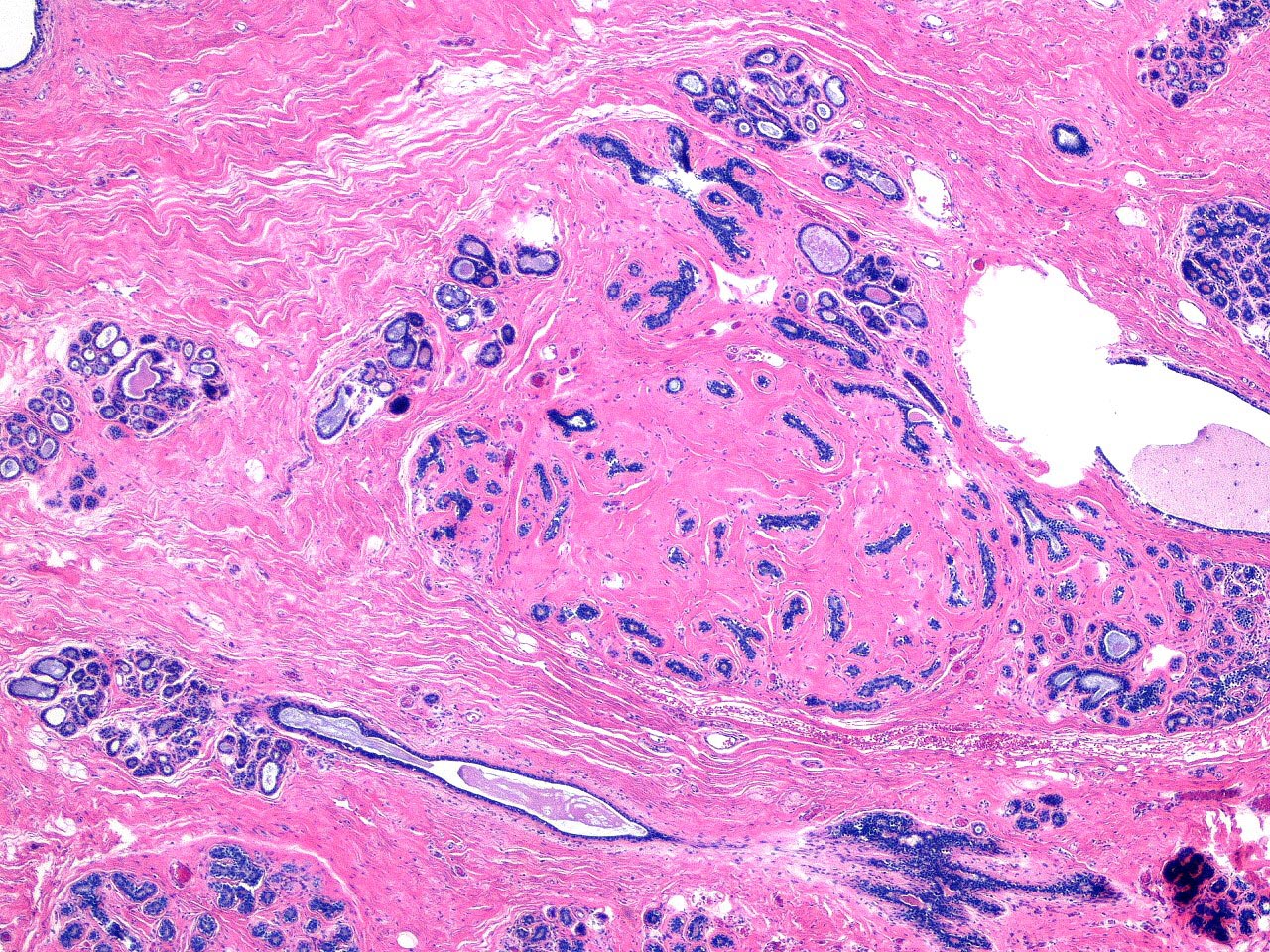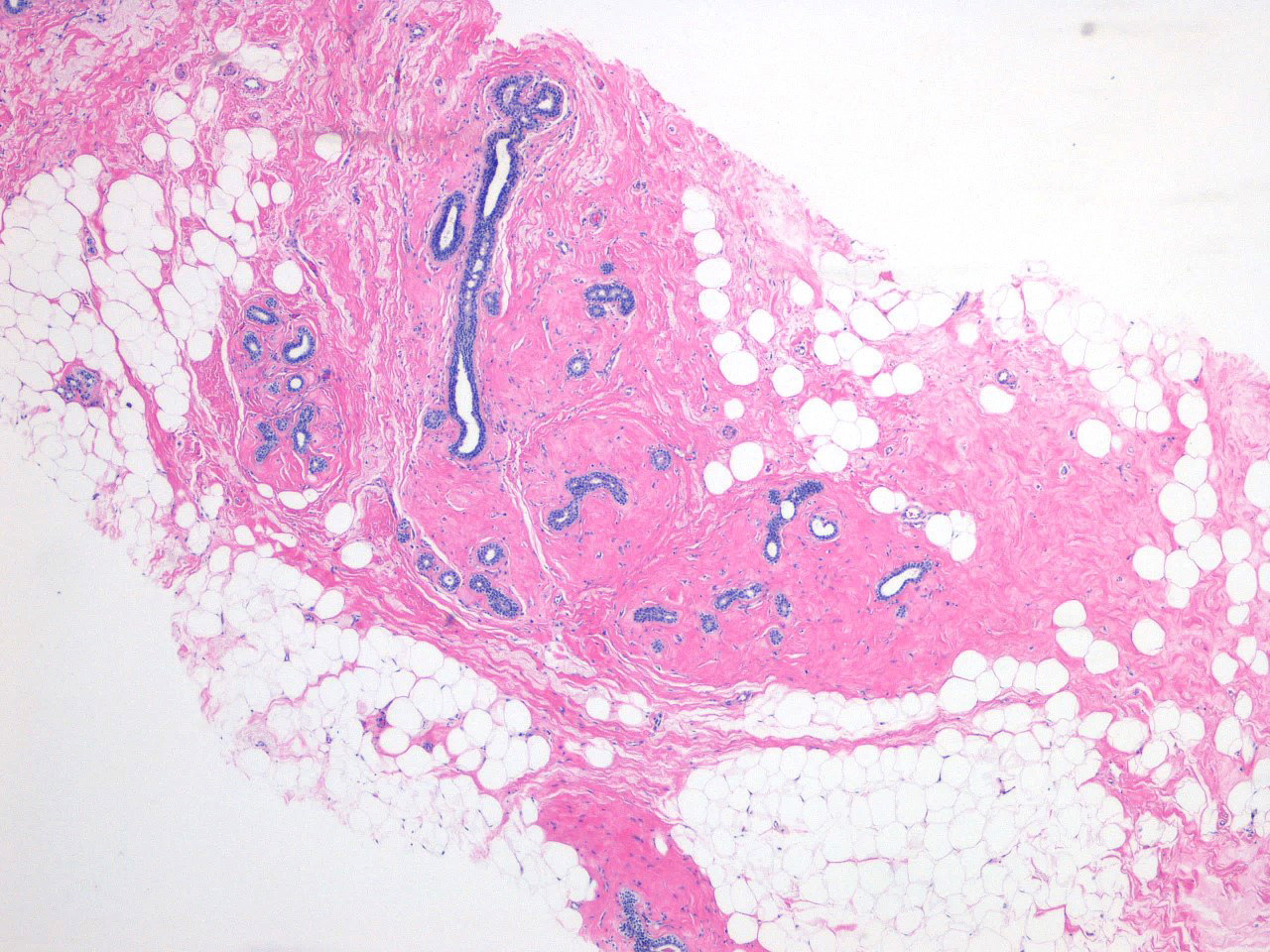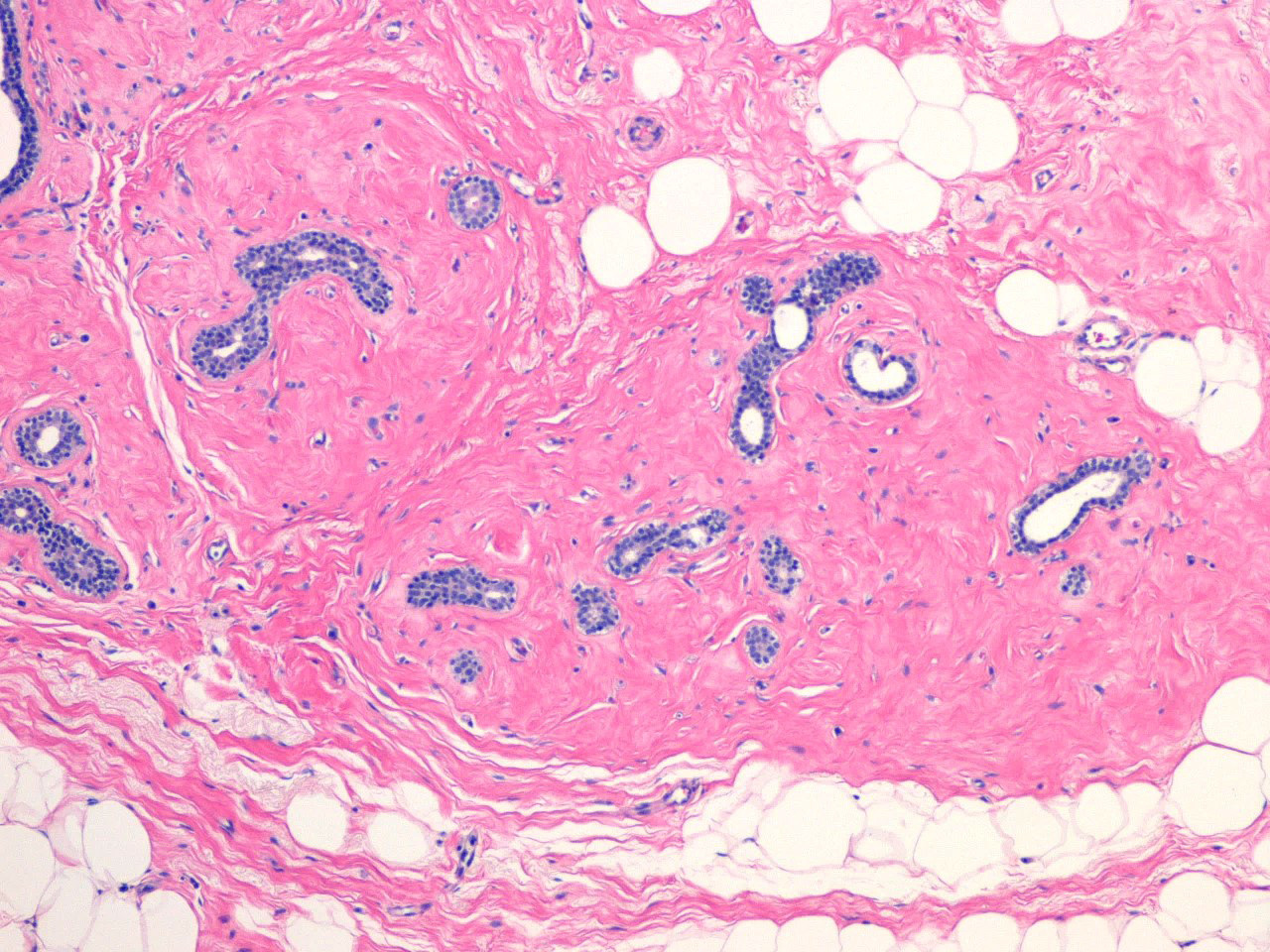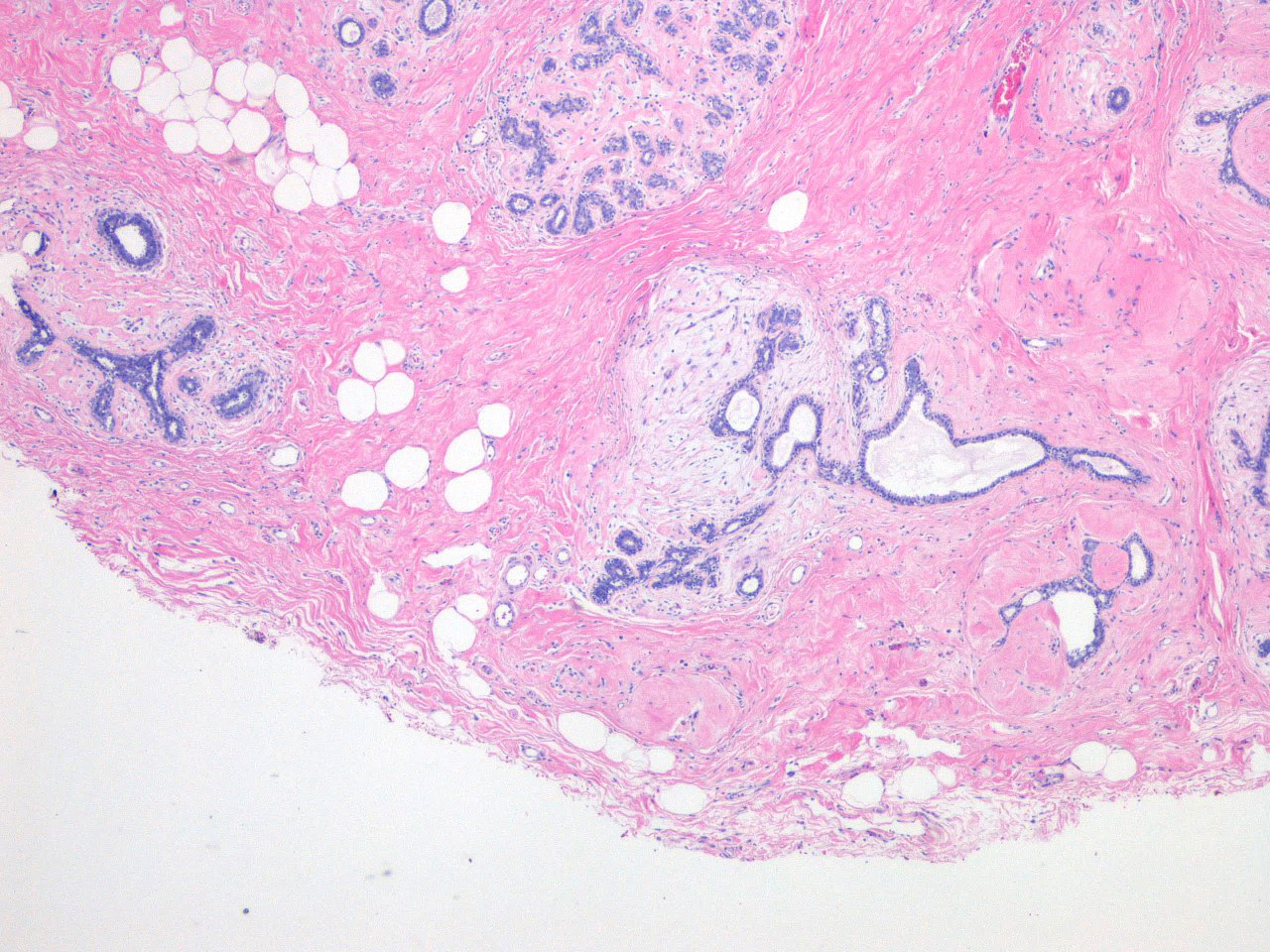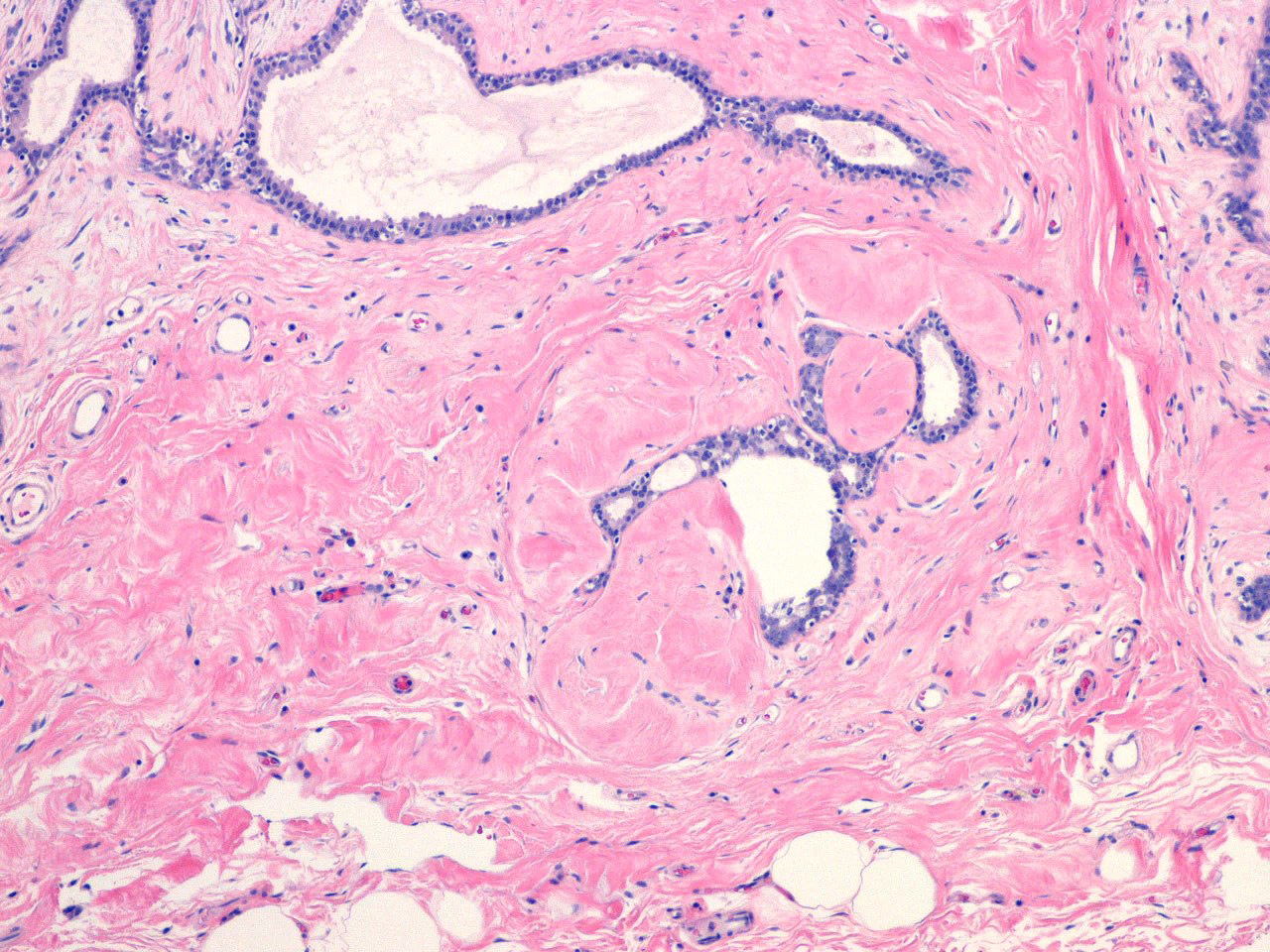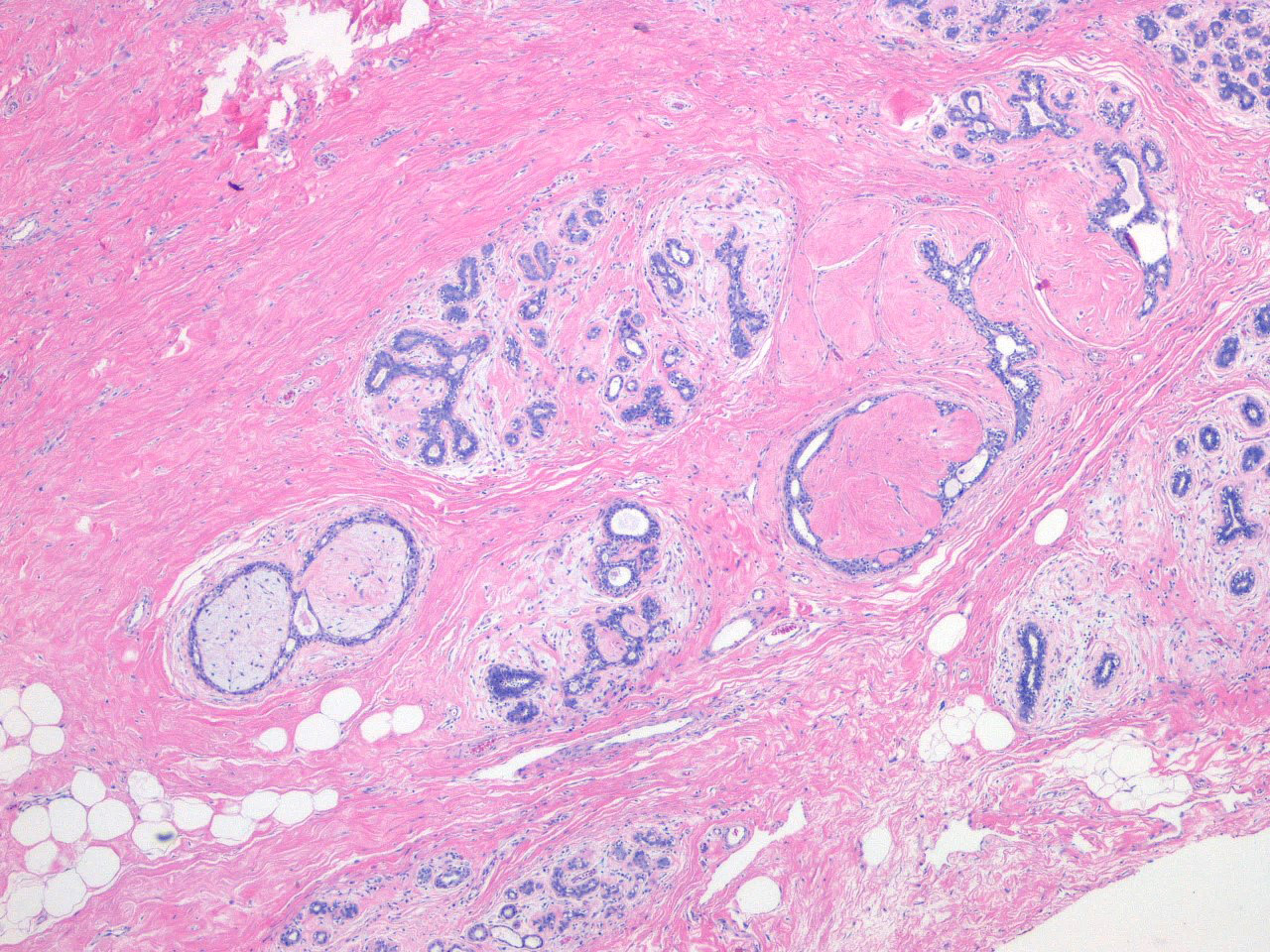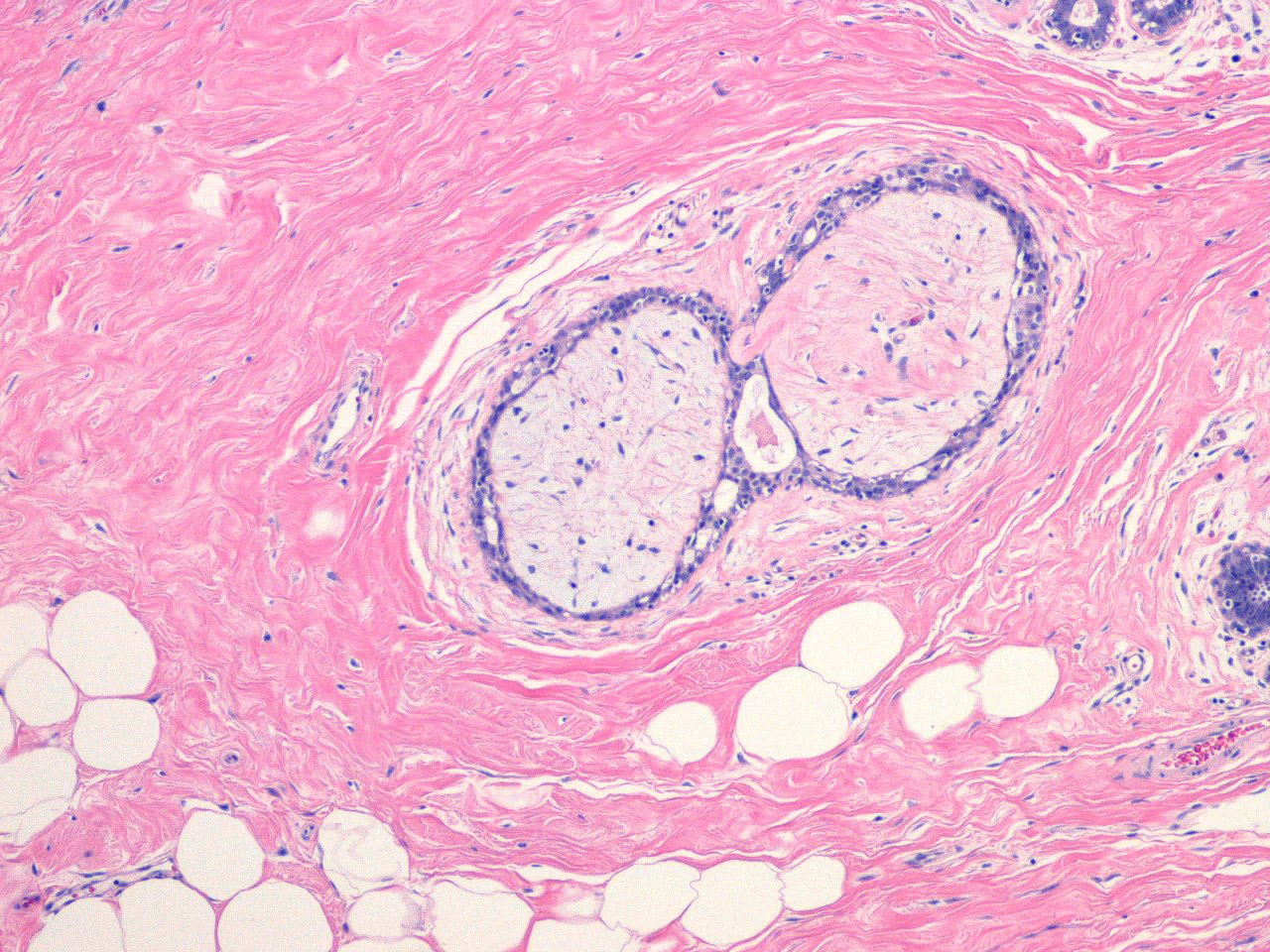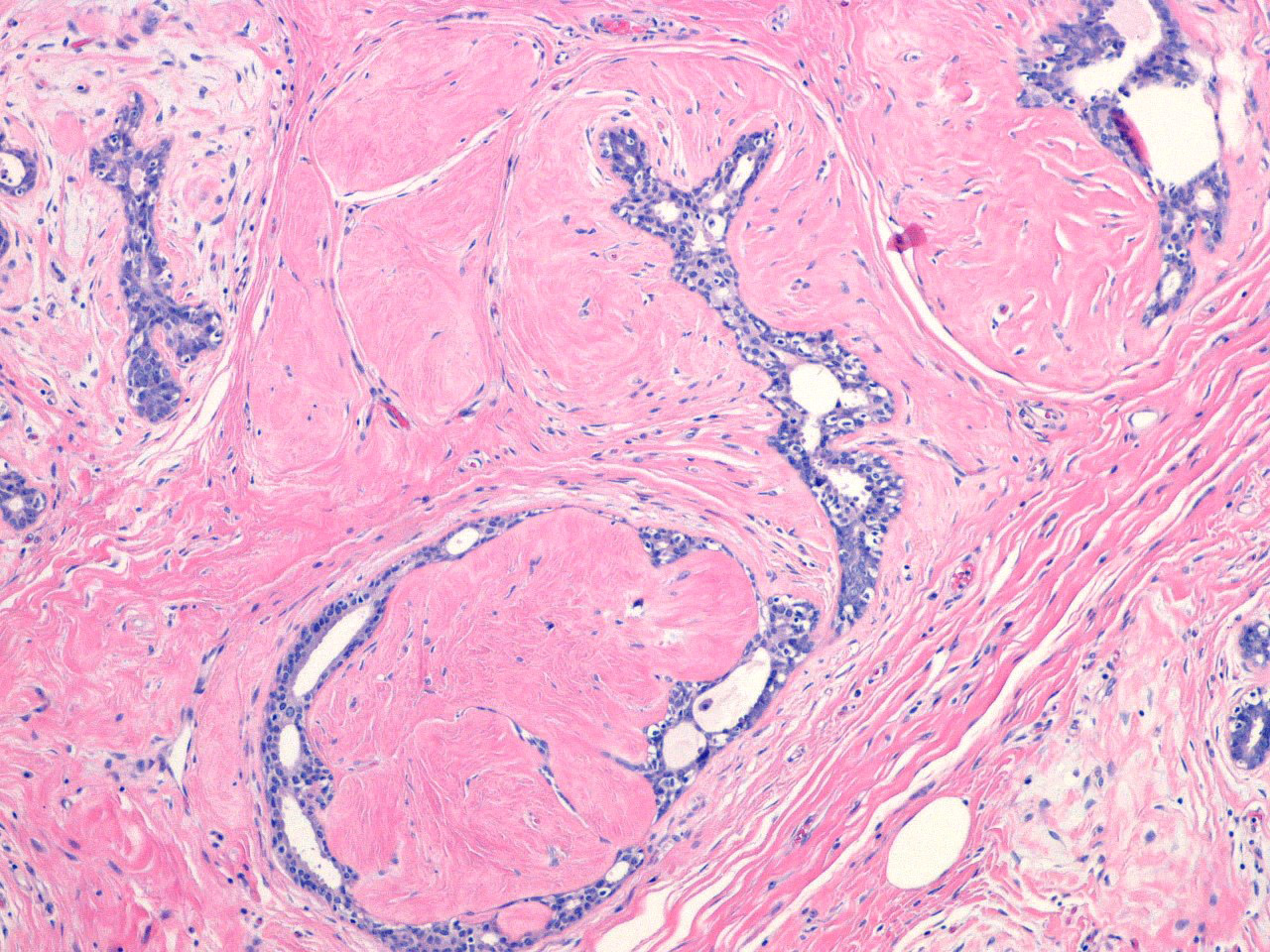Table of Contents
Definition / general | Essential features | Terminology | ICD coding | Epidemiology | Sites | Pathophysiology | Etiology | Clinical features | Diagnosis | Radiology description | Radiology images | Prognostic factors | Case reports | Treatment | Gross description | Microscopic (histologic) description | Microscopic (histologic) images | Cytology description | Sample pathology report | Differential diagnosis | Additional references | Board review style question #1 | Board review style answer #1Cite this page: Alexander M. Fibroadenomatoid change. PathologyOutlines.com website. https://www.pathologyoutlines.com/topic/breastfibroadenomatoidchange.html. Accessed April 19th, 2024.
Definition / general
- Benign, often incidental finding in a background of fibrocystic changes
- Lesion with features resembling a fibroadenoma but lacking sharp circumscription
Essential features
- Proliferation of intralobular stroma with the formation of stromal nodularity that often appears to blend in with the surrounding breast tissue
- Morphologically reminiscent of a fibroadenoma but not forming a well circumscribed mass
- May represent an incipient fibroadenoma
- Often multifocal and surrounded by fibrocystic changes
Terminology
- Also known as fibroadenomatous change, fibroadenomatoid hyperplasia, fibroadenomatoid mastopathy, fibroadenomatosis, sclerosing lobular hyperplasia
- Less frequently referred to as mixed lesion, reflecting the common association of fibroadenomatoid change and fibrocystic changes
ICD coding
- ICD-10: N60.2 - fibroadenosis of breast
Epidemiology
- F > M
- Mean age 28 - 34 years
- Represents 5 - 7% of nonneoplastic surgical biopsies in one study; 8% of nonneoplastic breast diagnoses in another
- References: AJR Am J Roentgenol 1998;171:1331, Am J Epidemiol 1978;108:112, Hum Pathol 1984;15:336
Sites
- Most common site is the upper outer quadrant of the breast (Hum Pathol 1984;15:336)
Pathophysiology
- Proliferation of intralobular stroma
- May represent a stage in the evolution of a fibroadenoma, produced by the coalescence of fibroadenomatoid nodules
- Reference: Hum Pathol 1984;15:336
Etiology
- Unknown; possibly due to or influenced by reproductive hormones, similar to fibroadenoma
Clinical features
- May be detected by imaging modalities (see Radiology below), as a palpable mass or incidentally in breast tissue sampled for a different lesion
Diagnosis
- Breast imaging modalities with core biopsy (stereotactic, ultrasound or MRI guided) or surgery followed by histologic examination of resected tissue
- References: AJR Am J Roentgenol 1995;165:291, AJR Am J Roentgenol 1998;171:1331
Radiology description
- Hypoechoic mass
- Asymmetric increased density
- Suspicious granular clustered microcalcifications (more frequent in women > 50 years old)
- No suspicious findings in patient with palpable mass
- Imaging findings in one study of fibroadenomatoid hyperplasia showed 53% were well defined mass
- 33% had normal mammographic findings
- 13% had an asymmetric density
- 1% with mammographic calcifications
- References: AJR Am J Roentgenol 1995;165:291, AJR Am J Roentgenol 1998;171:1331, Hum Pathol 1984;15:336
Radiology images
Prognostic factors
- No increased risk of malignancy
Case reports
- 12 year old girl with 3 month history of enlarging right breast mass (Cytojournal 2006;3:8)
- 14 year old girl with a 3 month history of painless enlarging right breast lump (Acta Cytol 2001;45:765)
- 24 year old woman with 7 cm mass (Gynecol Obstet Invest 2014;77:134)
- 69 year old man with heart failure treated with digoxin and spironolactone presents with bilateral gynecomastia (Am J Surg Pathol 1990;14:774)
Treatment
- No treatment required
Gross description
- Lesion appears dense and poorly circumscribed on cut section
- Difficult to distinguish from fibrocystic changes by gross examination
- Reference: Malays J Pathol 1991;13:101
Microscopic (histologic) description
- Proliferation of intralobular stroma containing epithelial elements, sometimes closely resembling a microfibroadenoma or microfibroadenomata
- Stroma may appear loose and cellular or dense and hyalinized
- Often multifocal in a background of fibrocystic changes, including cysts and adenosis
- Periphery may appear to blend into the surrounding breast tissue
- References: Hum Pathol 1984;15:336, Pathology 1987;19:393, Malays J Pathol 1991;13:101, AJR Am J Roentgenol 1998;171:1331, Schnitt: Biopsy Interpretation of the Breast, 3rd Edition, 2017
Microscopic (histologic) images
Contributed by Melissa Alexander, M.D., Ph.D.
Cytology description
- Elements similar to fibroadenoma, including stromal fragments; however, lacking other elements of fibroadenoma including branching antler horn epithelial clusters (Cytojournal 2006;3:8, Acta Cytol 2001;45:765)
Sample pathology report
- Breast, right, core biopsy:
- Fibroadenomatoid change associated with calcifications (see comment)
- Comment: Correlation with specimen radiograph was performed.
Differential diagnosis
- Fibroadenoma:
- Well circumscribed mass comprised of stromal and epithelial components sharply demarcated from the surrounding breast parenchyma
Additional references
Board review style question #1
Board review style answer #1





